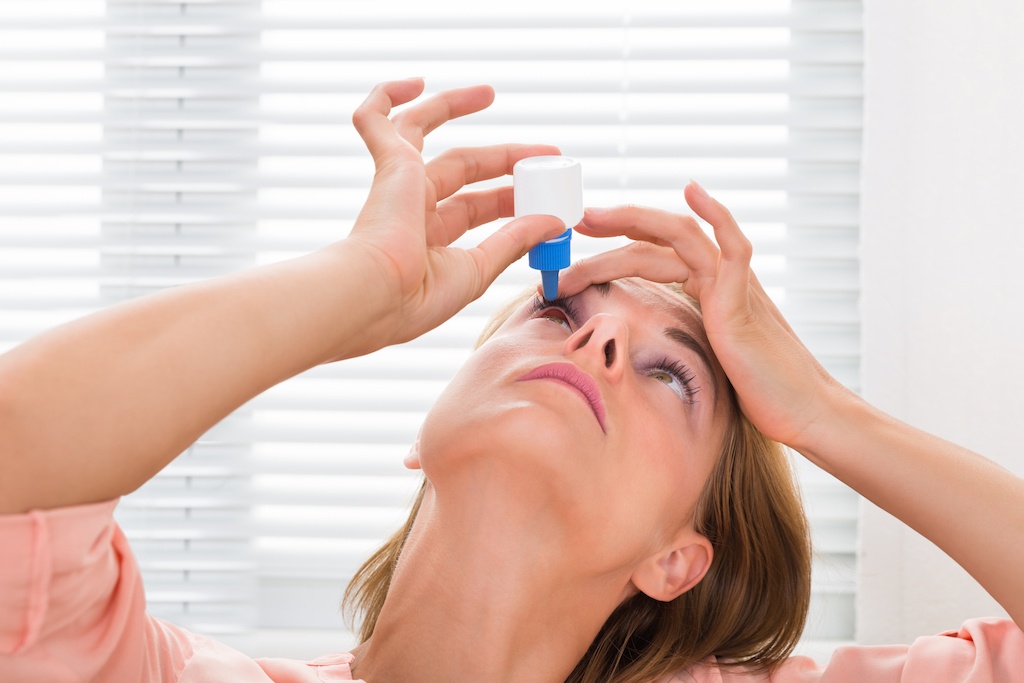When a patient is diagnosed with glaucoma, many times they believe that they will go blind and there’s nothing they can do about it. But Baylor Scott & White ophthalmologist Dr. Glen O. Brindley, who is the director of the division of glaucoma at the Scott & White Eye Institute, said that is not true. “Glaucoma is one of the most treatable diseases we see,” Dr. Brindley said. “It’s tremendously well-treated if we get to it early.”
What is glaucoma?
Glaucoma is a group of diseases that damages the optic nerve in a very characteristic pattern, Dr. Brindley explained. “The optic nerve is made up of one and a half million fibers that come from all over the retina,” he said. “These vision fibers come together in the optic nerve and then go into the brain.” When these fibers are damaged, they don’t repair themselves, and that’s what glaucoma does. It kills vision fibers, and they don’t come back. “In glaucoma treatment, all you can do is keep the patient where they are,” Dr. Brindley said. “That’s why early diagnosis is so important. The treatments are very good and can usually stop them where they are if they are treated early enough.”
What are the symptoms of glaucoma?
Unfortunately, there are no symptoms and no pain. Your eye will feel completely normal and look normal in the mirror. “If you have enough damage that you can tell it in your sight, then the disease is very far advanced,” he said. The only way to catch glaucoma in the early stages is to be seen by an ophthalmologist on a yearly basis.
How is glaucoma diagnosed?
The first method of determining if someone is suffering from glaucoma is to identify the amount of pressure in their eyes. “Most people have a pressure in their eye that’s 20 or less,” Dr. Brindley said. “Most glaucoma patients have a pressure that’s above that.”
But finding out a patient’s eye pressure isn’t the deciding factor. The ophthalmologist must also look at their optic nerve to see the extent of the damage. They do this by dilating the patient’s pupils and looking at the optic nerve. “If there’s suspicion of glaucoma, then you do what is called a visual field, where we bring little lights around the eye because that’s where the glaucoma damages first.”
The last test is to measure the thickness of the patient’s vision fibers with an Optical Coherence Tomography (OCT). The device takes cross-sectional pictures of the retina. With this machine, the doctor can see if the fibers are the right thickness.
The patient’s family history will also be taken to determine if a close family member suffered from glaucoma. Family history is one of the biggest factors in glaucoma. You are more likely to develop the disease if a close relative had it.
What is the average age of someone who gets glaucoma?
“Most people with glaucoma are over 60-years-old,” Dr. Brindley said. “However, you can be born with it. We’ve had children [in our practice] who at birth had pressures of 60 in both eyes.” That is why it is important to have your eyes checked yearly because you never know what sort of damage your eye has suffered.
“Glaucoma is one of the most treatable diseases we see”– Dr. Glen O. Brindley, Baylor Scott & White ophthalmologist
What are the treatments available?
Although there is research being conducted to find medications or other therapies that might help stop the effects of glaucoma, the only treatment, right now, is lowering the patient’s eye pressure. That can be done in one of three ways:
- Eye Drops – At least 80 percent of glaucoma patients can control the disease with eye drops. But they must be able to afford the medication, take the drops on time, not have too many side effects, and the drops have to lower the pressure significantly to be effective. If all of these criteria are met, then eye drops work well.
- Laser Therapy – We have a muscle in the eye that draws in clean, nourishing fluid from the blood stream into the eye. It circulates and drains out. In a glaucoma patient, the problem is the drains. Doctors can laser the drain, causing the drain to work more effectively.
- Surgery – In the operating room, surgeons build a drain in the eye using the patient’s own tissue. This can help cleanse the eye and lower the patient’s eye pressure.
Can glaucoma be prevented?
Dr. Brindley said there is really no way to prevent this disease. “You didn’t do anything wrong to get glaucoma,” he said. “It’s not like a smoker. If you’re going to get glaucoma, you’re going to get glaucoma. The best thing you can do is be proactive and see your doctor.”
If someone in your family has glaucoma, then you should get yearly pressure checks and have your doctor check your optic nerve. “Most people think that if you’ve got it, then you’re going to go blind,” Dr. Brindley said. “But that’s not true. If you’ve got it and you jump on therapy quickly, then you’ll be able to save your sight.”






Recent Comments